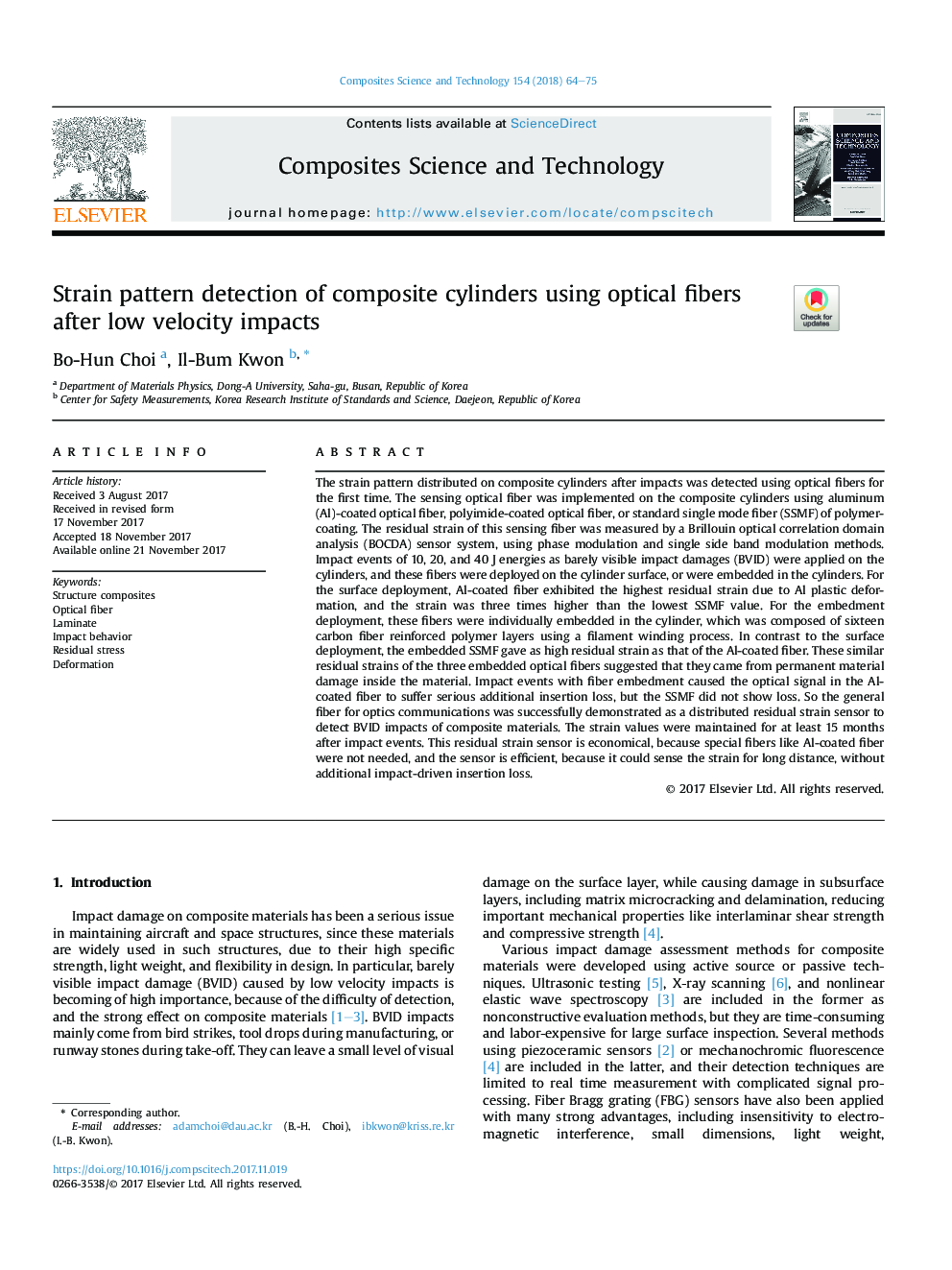| کد مقاله | کد نشریه | سال انتشار | مقاله انگلیسی | نسخه تمام متن |
|---|---|---|---|---|
| 7214943 | 1469471 | 2018 | 12 صفحه PDF | دانلود رایگان |
عنوان انگلیسی مقاله ISI
Strain pattern detection of composite cylinders using optical fibers after low velocity impacts
ترجمه فارسی عنوان
شناسایی الگوی کشش سیلندرهای کامپوزیتی با استفاده از فیبرهای نوری پس از تاثیرات کم سرعت
دانلود مقاله + سفارش ترجمه
دانلود مقاله ISI انگلیسی
رایگان برای ایرانیان
کلمات کلیدی
ساختار کامپوزیت فیبر نوری، ورقه ورقه رفتار ضربه، استرس باقی مانده، تغییر شکل،
موضوعات مرتبط
مهندسی و علوم پایه
سایر رشته های مهندسی
مهندسی (عمومی)
چکیده انگلیسی
The strain pattern distributed on composite cylinders after impacts was detected using optical fibers for the first time. The sensing optical fiber was implemented on the composite cylinders using aluminum (Al)-coated optical fiber, polyimide-coated optical fiber, or standard single mode fiber (SSMF) of polymer-coating. The residual strain of this sensing fiber was measured by a Brillouin optical correlation domain analysis (BOCDA) sensor system, using phase modulation and single side band modulation methods. Impact events of 10, 20, and 40Â J energies as barely visible impact damages (BVID) were applied on the cylinders, and these fibers were deployed on the cylinder surface, or were embedded in the cylinders. For the surface deployment, Al-coated fiber exhibited the highest residual strain due to Al plastic deformation, and the strain was three times higher than the lowest SSMF value. For the embedment deployment, these fibers were individually embedded in the cylinder, which was composed of sixteen carbon fiber reinforced polymer layers using a filament winding process. In contrast to the surface deployment, the embedded SSMF gave as high residual strain as that of the Al-coated fiber. These similar residual strains of the three embedded optical fibers suggested that they came from permanent material damage inside the material. Impact events with fiber embedment caused the optical signal in the Al-coated fiber to suffer serious additional insertion loss, but the SSMF did not show loss. So the general fiber for optics communications was successfully demonstrated as a distributed residual strain sensor to detect BVID impacts of composite materials. The strain values were maintained for at least 15 months after impact events. This residual strain sensor is economical, because special fibers like Al-coated fiber were not needed, and the sensor is efficient, because it could sense the strain for long distance, without additional impact-driven insertion loss.
ناشر
Database: Elsevier - ScienceDirect (ساینس دایرکت)
Journal: Composites Science and Technology - Volume 154, 18 January 2018, Pages 64-75
Journal: Composites Science and Technology - Volume 154, 18 January 2018, Pages 64-75
نویسندگان
Bo-Hun Choi, Il-Bum Kwon,
